
Signal converters are essential components in various electronic devices and systems, as they are responsible for converting one type of signal into another. This conversion process is crucial for ensuring compatibility between different devices and enabling seamless communication between them. In recent years, there have been significant advancements in signal converter manufacturing processes, leading to the development of more efficient, reliable, and versatile converters. In this article, we will explore some of the latest manufacturing processes used in signal converter production.1. Surface Mount Technology (SMT)Surface mount technology (SMT) has revolutionized the manufacturing process of signal converters by enabling the placement of components directly onto the surface of a printed circuit board (PCB). This technology eliminates the need for through-hole components, making the assembly process faster, more cost-effective, and more reliable. SMT also allows for higher component density on the PCB, leading to smaller and more compact signal converters.2. Automated AssemblyAutomation has become increasingly prevalent in signal converter manufacturing, with automated assembly processes being used to streamline production and improve efficiency. Automated assembly systems can perform tasks such as component placement, soldering, testing, and inspection with high precision and consistency. This results in higher quality products and faster turnaround times, ultimately reducing manufacturing costs and improving overall productivity.3. Advanced MaterialsThe use of advanced materials in signal converter manufacturing has led to the development of converters with improved performance and reliability. For example, the use of high-quality substrates, such as ceramic or FR-4, can enhance signal integrity and reduce electromagnetic interference. Similarly, the use of advanced coatings and encapsulation materials can improve the durability and environmental resistance of signal converters, making them suitable for a wide range of applications.4. MiniaturizationMiniaturization is a key trend in signal converter manufacturing, driven by the demand for smaller and more compact devices. Advances in microelectronics and packaging technologies have enabled the development of miniature signal converters that offer the same performance as larger counterparts. Miniaturization not only saves space but also reduces power consumption and improves portability, making signal converters more versatile and adaptable to various applications.5. Multi-FunctionalityAnother emerging trend in signal converter manufacturing is the integration of multiple functions into a single device. By combining different types of signal conversion capabilities, such as analog-to-digital, digital-to-analog, and voltage-to-current conversion, into a single converter, manufacturers can offer more versatile and cost-effective solutions to customers. Multi-functional signal converters can simplify system design, reduce component count, and improve overall system performance.6. Testing and Quality ControlQuality control is a critical aspect of signal converter manufacturing, as even minor defects can lead to performance issues or system failures. Manufacturers are increasingly investing in advanced testing equipment and processes to ensure the quality and reliability of their products. Automated testing systems can perform comprehensive functional tests, electrical measurements, and environmental stress tests to identify any defects or inconsistencies in signal converters before they are shipped to customers.7. Environmental SustainabilityEnvironmental sustainability is becoming a key consideration in signal converter manufacturing, with manufacturers increasingly adopting eco-friendly practices and materials. This includes the use of lead-free solder, recyclable packaging, and energy-efficient production processes to minimize the environmental impact of signal converter manufacturing. By prioritizing sustainability, manufacturers can reduce waste, conserve resources, and contribute to a more sustainable future.In conclusion, the latest signal converter manufacturing processes are characterized by advancements in technology, materials, automation, miniaturization, multi-functionality, testing, quality control, and environmental sustainability. These developments have led to the production of signal converters that are more efficient, reliable, versatile, and environmentally friendly than ever before. As the demand for signal converters continues to grow across various industries, manufacturers will continue to innovate and improve their manufacturing processes to meet the evolving needs of customers and the market.
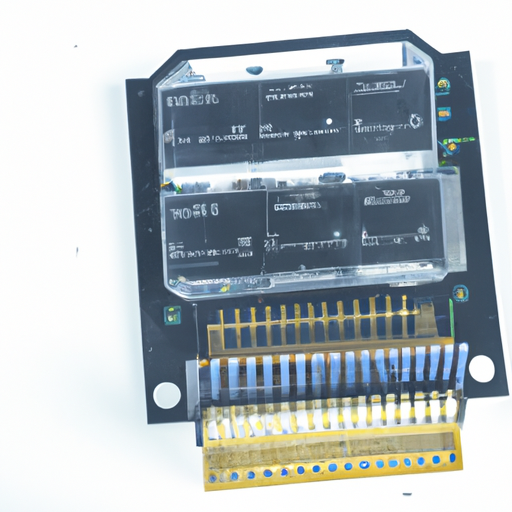
Signal converters are devices that are used to convert one type of signal into another. They are commonly used in a variety of industries, including telecommunications, electronics, and automation. Signal converters can be used to convert analog signals to digital signals, digital signals to analog signals, voltage signals to current signals, and vice versa. They are essential for ensuring that different devices and systems can communicate effectively with each other.There are several different types of signal converters available on the market, each designed for specific applications and requirements. Some of the most common types of signal converters include:1. Analog to Digital Converters (ADCs): ADCs are used to convert analog signals, such as voltage or current, into digital signals that can be processed by digital devices. They are commonly used in applications where precise measurements and control are required, such as in industrial automation and data acquisition systems.2. Digital to Analog Converters (DACs): DACs are used to convert digital signals into analog signals. They are commonly used in applications where digital control signals need to be converted into analog control signals, such as in audio equipment and motor control systems.3. Voltage to Current Converters: Voltage to current converters are used to convert voltage signals into current signals. They are commonly used in applications where a current signal is required to drive a load, such as in motor control systems and power supply circuits.4. Current to Voltage Converters: Current to voltage converters are used to convert current signals into voltage signals. They are commonly used in applications where a voltage signal is required to measure or control a current signal, such as in sensor interfaces and data acquisition systems.5. Frequency to Voltage Converters: Frequency to voltage converters are used to convert frequency signals into voltage signals. They are commonly used in applications where the frequency of a signal needs to be measured or controlled, such as in frequency counters and speed control systems.6. Isolation Amplifiers: Isolation amplifiers are used to provide electrical isolation between two circuits while amplifying the signal between them. They are commonly used in applications where electrical noise or interference needs to be minimized, such as in medical devices and industrial control systems.7. Signal Conditioners: Signal conditioners are used to condition and amplify signals before they are sent to a data acquisition system or control device. They are commonly used in applications where the signal needs to be filtered, scaled, or linearized before further processing.Signal converters are essential components in modern electronics and automation systems, enabling different devices and systems to communicate effectively with each other. They come in a variety of types and configurations to suit different applications and requirements. Whether you need to convert analog signals to digital signals, digital signals to analog signals, voltage signals to current signals, or vice versa, there is a signal converter available to meet your needs.
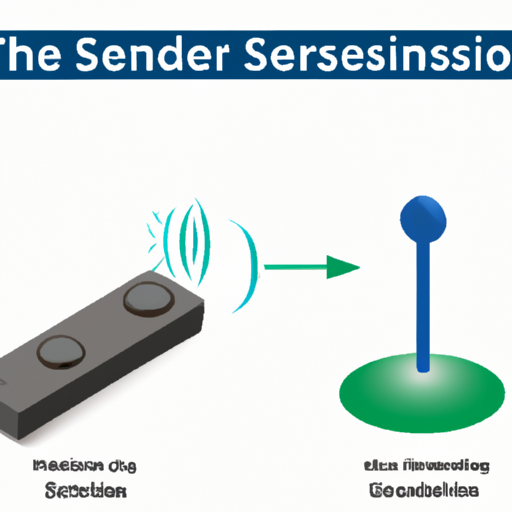
Adjustable sensors are a type of sensor that can be customized or modified to meet specific requirements or preferences. These sensors are designed to be versatile and adaptable, allowing users to adjust various parameters such as sensitivity, range, and response time. This flexibility makes adjustable sensors ideal for a wide range of applications where precise and customizable sensing capabilities are needed.Adjustable sensors work by utilizing various technologies to detect changes in their environment and convert these changes into electrical signals. These signals are then processed and analyzed to provide information about the conditions being monitored. By adjusting the sensor's settings, users can fine-tune its performance to suit their specific needs.There are several ways in which adjustable sensors can be customized:1. Sensitivity: One of the key parameters that can be adjusted in a sensor is its sensitivity. This refers to the sensor's ability to detect small changes in its environment. By adjusting the sensitivity of a sensor, users can control the level of detail and precision in the data it collects. For example, in a motion sensor, increasing the sensitivity can make it more responsive to slight movements, while decreasing the sensitivity can filter out background noise.2. Range: Another important parameter that can be adjusted in a sensor is its range. This refers to the distance over which the sensor can detect changes in its environment. By adjusting the range of a sensor, users can control the area that the sensor covers and the distance at which it can detect objects or events. For example, in a proximity sensor, increasing the range can extend the detection area, while decreasing the range can focus the sensor on a specific target.3. Response time: The response time of a sensor refers to the time it takes for the sensor to detect a change in its environment and generate a response. By adjusting the response time of a sensor, users can control how quickly the sensor reacts to changes and how quickly it provides feedback. For example, in a temperature sensor, decreasing the response time can provide real-time data on temperature fluctuations, while increasing the response time can smooth out rapid changes.Adjustable sensors can be found in a wide range of applications across various industries. Some common examples include:1. Industrial automation: Adjustable sensors are commonly used in industrial automation systems to monitor and control manufacturing processes. By adjusting the sensitivity, range, and response time of sensors, manufacturers can optimize production efficiency, ensure product quality, and improve safety.2. Home security: Adjustable sensors are also used in home security systems to detect intruders, monitor environmental conditions, and alert homeowners to potential threats. By customizing the settings of sensors, users can tailor their security system to meet their specific needs and preferences.3. Automotive: Adjustable sensors are integral to modern vehicles, where they are used for a variety of purposes such as collision avoidance, parking assistance, and driver assistance systems. By adjusting the parameters of sensors, automakers can enhance the safety, comfort, and performance of their vehicles.In conclusion, adjustable sensors are a versatile and customizable solution for a wide range of sensing applications. By allowing users to adjust parameters such as sensitivity, range, and response time, these sensors can be tailored to meet specific requirements and preferences. Whether used in industrial automation, home security, automotive, or other applications, adjustable sensors offer a flexible and adaptable sensing solution for a variety of needs.
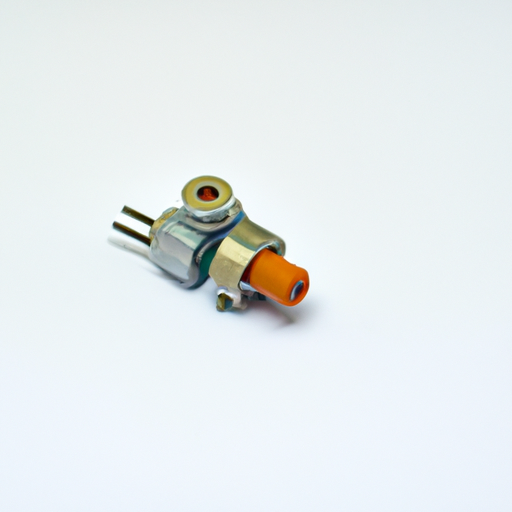
Adjustable sensors are a type of sensor that can be adjusted to detect different levels of a particular parameter, such as light, temperature, pressure, or motion. These sensors are versatile and can be used in a wide range of applications across various industries. In this article, we will explore the main application directions of adjustable sensors and how they are being used to improve efficiency, accuracy, and safety in different fields.One of the main application directions of adjustable sensors is in the field of industrial automation. Adjustable sensors are commonly used in manufacturing plants and factories to monitor and control various processes. For example, in a production line, adjustable sensors can be used to detect the presence of objects, measure the temperature of equipment, or monitor the pressure of a system. By adjusting the sensitivity of the sensors, manufacturers can ensure that their processes are running smoothly and efficiently.Another important application direction of adjustable sensors is in the field of environmental monitoring. These sensors can be used to measure air quality, water quality, and soil conditions. By adjusting the sensors to detect different levels of pollutants or contaminants, environmental scientists can gather valuable data to assess the health of ecosystems and make informed decisions about conservation efforts. Adjustable sensors are also used in weather stations to monitor temperature, humidity, and atmospheric pressure, providing valuable information for meteorologists and climate researchers.Adjustable sensors are also widely used in the field of healthcare. These sensors can be used in medical devices to monitor vital signs, such as heart rate, blood pressure, and oxygen levels. By adjusting the sensitivity of the sensors, healthcare professionals can accurately measure and track a patient's health status, allowing for timely interventions and improved patient outcomes. Adjustable sensors are also used in wearable devices, such as fitness trackers and smartwatches, to monitor physical activity and provide personalized health insights to users.In the field of automotive technology, adjustable sensors play a crucial role in ensuring the safety and efficiency of vehicles. These sensors can be used in advanced driver-assistance systems (ADAS) to detect obstacles, monitor lane departure, and assist with parking. By adjusting the sensors to different levels of sensitivity, automotive engineers can fine-tune the performance of these systems to provide optimal safety and convenience for drivers. Adjustable sensors are also used in autonomous vehicles to navigate complex environments and avoid collisions.Adjustable sensors are also finding applications in the field of smart buildings and home automation. These sensors can be used to monitor energy consumption, detect intruders, and control lighting and HVAC systems. By adjusting the sensors to different levels of sensitivity, homeowners and building managers can optimize energy efficiency, enhance security, and improve comfort levels. Adjustable sensors are also used in smart appliances, such as refrigerators and thermostats, to provide personalized experiences and reduce energy waste.In conclusion, adjustable sensors are versatile devices that can be adjusted to detect different levels of a particular parameter in various applications. From industrial automation to environmental monitoring, healthcare, automotive technology, and smart buildings, these sensors are playing a crucial role in improving efficiency, accuracy, and safety across different industries. As technology continues to advance, the demand for adjustable sensors is expected to grow, leading to further innovations and applications in the future.

Fixed electrical sensors are essential components in various industries, including manufacturing, automotive, aerospace, and healthcare. These sensors play a crucial role in detecting and measuring physical quantities such as temperature, pressure, proximity, and motion. The production processes for fixed electrical sensors involve several steps to ensure high quality and reliability. In this article, we will discuss the common production processes for fixed electrical sensors.1. Design and Development: The production process for fixed electrical sensors begins with the design and development phase. Engineers and designers work together to create a detailed blueprint of the sensor, taking into account the specific requirements and specifications of the application. This phase involves selecting the appropriate materials, components, and technologies to ensure the sensor meets the desired performance criteria.2. Material Selection: The next step in the production process is material selection. The choice of materials is critical in determining the performance, durability, and reliability of the sensor. Common materials used in fixed electrical sensors include metals such as stainless steel, aluminum, and copper, as well as polymers and ceramics. The material selection process also considers factors such as temperature resistance, corrosion resistance, and electrical conductivity.3. Component Fabrication: Once the materials are selected, the next step is component fabrication. This involves manufacturing individual components such as sensor elements, housing, connectors, and circuit boards. Precision machining techniques such as milling, turning, and grinding are used to create complex shapes and features with tight tolerances. Advanced manufacturing technologies such as 3D printing and laser cutting may also be employed to produce components with intricate designs.4. Assembly: The assembly process involves putting together the individual components to create the final sensor assembly. This step requires skilled technicians to carefully align and connect the components using soldering, welding, or adhesive bonding techniques. Automated assembly equipment may be used to streamline the process and ensure consistency in the assembly of multiple sensors.5. Calibration and Testing: Calibration and testing are critical steps in the production process to ensure the accuracy and reliability of the sensor. Calibration involves adjusting the sensor to match a known standard or reference value. Testing involves subjecting the sensor to various environmental conditions, mechanical stresses, and electrical signals to verify its performance under different operating conditions. Quality control measures are implemented to identify and rectify any defects or deviations from the specifications.6. Packaging and Labeling: Once the sensors have been calibrated and tested, they are packaged and labeled for shipment to customers. Packaging materials such as foam inserts, plastic trays, and cardboard boxes are used to protect the sensors during transportation and storage. Labels containing important information such as part number, serial number, and operating instructions are affixed to the packaging for easy identification and traceability.7. Quality Assurance: Throughout the production process, quality assurance measures are implemented to ensure that the sensors meet the highest standards of quality and reliability. Quality control checks are performed at each stage of production to identify and address any issues or deviations from the specifications. Statistical process control techniques may be used to monitor key performance indicators and ensure consistency in sensor production.In conclusion, the production processes for fixed electrical sensors involve a series of steps from design and development to quality assurance and packaging. By following these processes meticulously, manufacturers can produce high-quality sensors that meet the stringent requirements of various industries. Continuous improvement and innovation in production techniques are essential to meet the evolving demands of the market and maintain a competitive edge in the sensor industry.
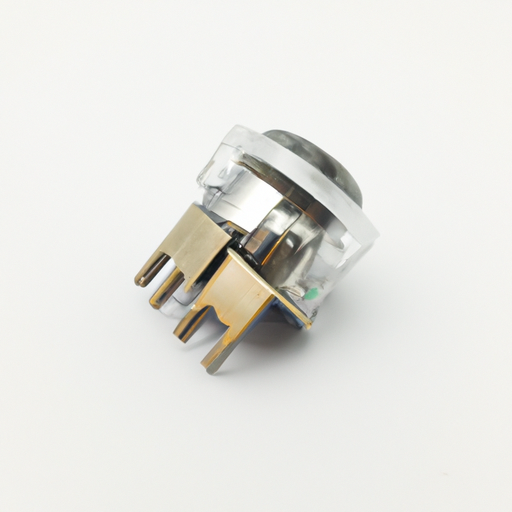
Fixed electrical sensor products are essential components in various industries, providing accurate and reliable data for monitoring and control purposes. These sensors offer numerous advantages that make them indispensable in modern manufacturing and automation processes. In this article, we will explore the benefits of fixed electrical sensor products and how they contribute to improved efficiency, safety, and productivity in different applications.1. Accuracy and Precision: Fixed electrical sensors are designed to provide precise and accurate measurements of various parameters such as temperature, pressure, level, flow, and proximity. These sensors use advanced technology to ensure high levels of accuracy, making them ideal for critical applications where precise data is essential for optimal performance.2. Reliability and Durability: Fixed electrical sensors are built to withstand harsh operating conditions, including extreme temperatures, humidity, and vibration. These sensors are made from high-quality materials that ensure long-term reliability and durability, reducing the need for frequent maintenance and replacement. This reliability is crucial for continuous operation in industrial environments where downtime can result in significant losses.3. Cost-Effectiveness: Fixed electrical sensors offer a cost-effective solution for monitoring and control applications, providing accurate data at a fraction of the cost of manual monitoring systems. These sensors require minimal maintenance and calibration, reducing overall operating costs and improving the return on investment. Additionally, the long lifespan of fixed electrical sensors further contributes to their cost-effectiveness.4. Easy Installation and Integration: Fixed electrical sensors are designed for easy installation and integration into existing systems, making them suitable for a wide range of applications. These sensors can be easily mounted on equipment or machinery, requiring minimal setup and configuration. Furthermore, fixed electrical sensors are compatible with various communication protocols, allowing seamless integration with control systems for real-time monitoring and data analysis.5. Real-Time Monitoring and Control: Fixed electrical sensors enable real-time monitoring and control of critical parameters, providing instant feedback on process conditions. This real-time data allows operators to make informed decisions quickly, optimizing performance and efficiency. Additionally, fixed electrical sensors can be programmed to trigger alarms or shutdowns in case of abnormal conditions, enhancing safety and preventing equipment damage.6. Versatility and Flexibility: Fixed electrical sensors are available in a wide range of configurations and specifications to suit different applications and requirements. These sensors can be customized to measure specific parameters or operate in challenging environments, making them versatile and adaptable to various industries. Whether it's monitoring temperature in a chemical plant or detecting motion in a security system, fixed electrical sensors offer a flexible solution for diverse applications.7. Improved Safety and Compliance: Fixed electrical sensors play a crucial role in ensuring safety and compliance with industry regulations and standards. These sensors can monitor hazardous conditions, such as high temperatures or toxic gases, and alert operators to take corrective actions. By providing accurate and reliable data, fixed electrical sensors help prevent accidents, protect personnel, and maintain regulatory compliance.In conclusion, fixed electrical sensor products offer numerous advantages that make them indispensable in modern industrial applications. From accuracy and reliability to cost-effectiveness and safety, these sensors provide essential data for monitoring and control purposes, contributing to improved efficiency, productivity, and overall performance. With their advanced technology and versatility, fixed electrical sensors continue to play a vital role in various industries, driving innovation and progress in automation and manufacturing processes.
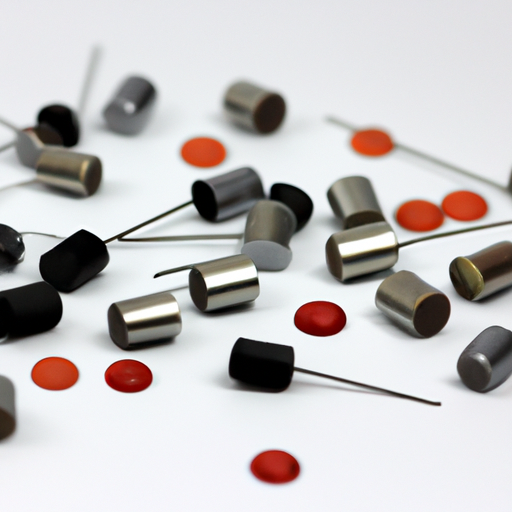
Polymer capacitors are a type of capacitor that uses a conductive polymer as the electrolyte instead of a liquid or gel electrolyte. This type of capacitor offers several advantages over traditional electrolytic capacitors, including lower ESR (equivalent series resistance), longer lifespan, and better stability over a wide range of temperatures. In recent years, there have been significant advancements in the manufacturing processes of polymer capacitors, leading to improved performance and reliability. In this article, we will explore some of the latest manufacturing processes used in the production of polymer capacitors.One of the key advancements in polymer capacitor manufacturing is the use of advanced materials and technologies to improve the performance and reliability of these capacitors. One such material is conductive polymer, which is used as the electrolyte in polymer capacitors. Conductive polymers are highly conductive materials that can be easily processed into thin films, making them ideal for use in capacitors. These polymers offer low ESR and high capacitance values, making them suitable for a wide range of applications.In addition to using advanced materials, manufacturers are also employing innovative manufacturing processes to improve the performance of polymer capacitors. One such process is the use of thin film deposition techniques to create the electrodes of the capacitor. Thin film deposition involves depositing a thin layer of metal onto a substrate using techniques such as sputtering or evaporation. This process allows for precise control over the thickness and composition of the electrode, leading to improved performance and reliability of the capacitor.Another important manufacturing process used in the production of polymer capacitors is the use of advanced packaging techniques. Packaging plays a crucial role in the performance and reliability of capacitors, as it protects the internal components from external factors such as moisture and temperature fluctuations. Manufacturers are now using advanced packaging materials such as epoxy resins and silicone gels to encapsulate the capacitor, providing a high level of protection against environmental factors.Furthermore, manufacturers are also focusing on improving the assembly processes of polymer capacitors to ensure consistent quality and reliability. One such process is the use of automated assembly equipment, which allows for precise placement of components and reduces the risk of human error. Automated assembly equipment also enables manufacturers to increase production efficiency and reduce costs, leading to lower prices for consumers.In addition to these advancements in manufacturing processes, manufacturers are also investing in research and development to further improve the performance of polymer capacitors. One area of research is the development of new polymer materials with enhanced conductivity and stability. Researchers are also exploring new electrode materials and designs to improve the performance of polymer capacitors even further.Overall, the latest manufacturing processes in polymer capacitor production are focused on improving performance, reliability, and cost-effectiveness. By using advanced materials, innovative manufacturing techniques, and automated assembly processes, manufacturers are able to produce high-quality polymer capacitors that meet the demands of modern electronic devices. With ongoing research and development efforts, we can expect to see further advancements in polymer capacitor technology in the coming years.
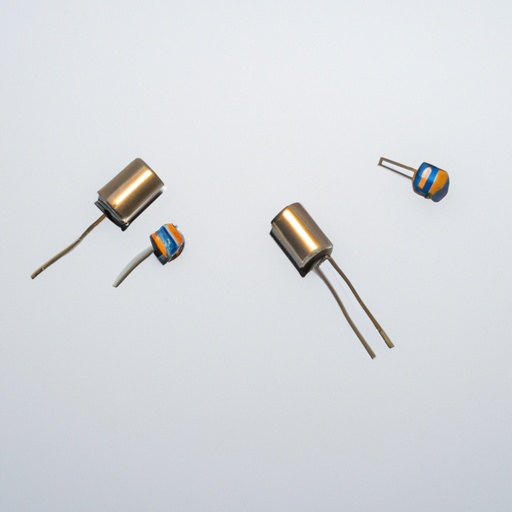
Silicon capacitors are a type of capacitor that utilizes silicon as the dielectric material. They offer several advantages over traditional capacitors, making them a popular choice for a wide range of applications. In this article, we will explore the advantages of silicon capacitor products in detail.1. High capacitance density: Silicon capacitors have a high capacitance density, meaning they can store a large amount of charge in a small volume. This makes them ideal for applications where space is limited, such as in portable electronic devices or integrated circuits.2. Low leakage current: Silicon capacitors have a low leakage current, which means they can hold their charge for longer periods of time without losing energy. This makes them suitable for applications that require stable and reliable energy storage, such as in power supplies or memory backup systems.3. High temperature stability: Silicon capacitors have a high temperature stability, meaning they can operate effectively in a wide range of temperatures without losing performance. This makes them suitable for applications that require reliable operation in harsh environments, such as in automotive or aerospace systems.4. Long lifespan: Silicon capacitors have a long lifespan, with some models capable of lasting for decades without needing replacement. This makes them a cost-effective choice for applications that require long-term reliability, such as in industrial equipment or medical devices.5. Low ESR and ESL: Silicon capacitors have low equivalent series resistance (ESR) and equivalent series inductance (ESL), which means they can deliver energy quickly and efficiently without losing power. This makes them ideal for applications that require high-speed energy delivery, such as in high-frequency circuits or power converters.6. Wide voltage range: Silicon capacitors are available in a wide range of voltage ratings, making them suitable for a variety of applications that require different voltage levels. This flexibility makes them a versatile choice for designers looking to optimize their circuit designs.7. RoHS compliance: Silicon capacitors are RoHS compliant, meaning they do not contain hazardous substances such as lead or mercury. This makes them environmentally friendly and safe for use in consumer electronics and other applications where environmental regulations are a concern.8. Customizable designs: Silicon capacitors can be customized to meet specific requirements, such as capacitance values, voltage ratings, or package sizes. This flexibility allows designers to tailor their capacitor designs to fit their unique application needs, making silicon capacitors a versatile choice for a wide range of applications.In conclusion, silicon capacitors offer a range of advantages that make them a popular choice for a variety of applications. With high capacitance density, low leakage current, high temperature stability, long lifespan, low ESR and ESL, wide voltage range, RoHS compliance, and customizable designs, silicon capacitors are a versatile and reliable option for designers looking to optimize their circuit designs. Whether used in portable electronic devices, power supplies, high-frequency circuits, or other applications, silicon capacitors provide a cost-effective and efficient solution for energy storage and delivery.

Oxidation capacitors, also known as aluminum electrolytic capacitors, are a type of capacitor that is widely used in various electronic devices and systems. These capacitors are known for their high capacitance values and ability to store and release electrical energy efficiently. They are commonly used in power supplies, audio equipment, and other electronic devices where high capacitance values are required.The main application direction of oxidation capacitors is in power supply circuits. These capacitors are used to smooth out voltage fluctuations and provide a stable source of power to electronic devices. In power supply circuits, oxidation capacitors are typically used in conjunction with other components such as rectifiers and transformers to convert AC power from the mains into DC power that can be used by electronic devices.Another common application of oxidation capacitors is in audio equipment. These capacitors are used in audio amplifiers and other audio devices to filter out noise and provide a clean and clear signal. In audio equipment, oxidation capacitors are often used in conjunction with other components such as resistors and inductors to create filters that can remove unwanted frequencies from the audio signal.Oxidation capacitors are also used in motor control circuits. These capacitors are used to store energy and provide a boost to the motor when it starts up. In motor control circuits, oxidation capacitors are often used in conjunction with other components such as transistors and diodes to control the speed and direction of the motor.In addition to these applications, oxidation capacitors are also used in a wide range of other electronic devices and systems. For example, they are used in lighting systems, telecommunications equipment, and industrial control systems. In all of these applications, oxidation capacitors play a crucial role in providing stable and reliable power to electronic devices.One of the key advantages of oxidation capacitors is their high capacitance values. This allows them to store large amounts of electrical energy and provide a stable source of power to electronic devices. In addition, oxidation capacitors are relatively inexpensive and widely available, making them a popular choice for a wide range of applications.Despite their many advantages, oxidation capacitors do have some limitations. For example, they have a limited lifespan compared to other types of capacitors, and they can be sensitive to temperature and voltage fluctuations. In addition, oxidation capacitors can be bulky and may not be suitable for applications where space is limited.Overall, oxidation capacitors are a versatile and widely used component in electronic devices and systems. Their high capacitance values and ability to store and release electrical energy efficiently make them an essential component in power supply circuits, audio equipment, motor control circuits, and many other applications. While they do have some limitations, oxidation capacitors continue to be a popular choice for engineers and designers looking for a reliable and cost-effective solution for their electronic designs.
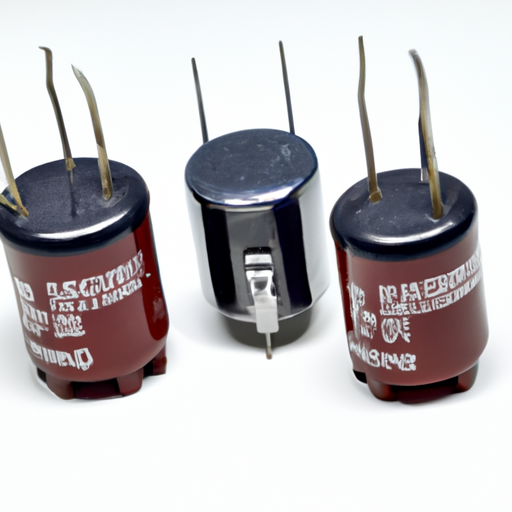
A variable capacitor is a type of electronic component that is used to store electric charge and adjust the capacitance in an electrical circuit. It is also known as a tuning capacitor or a trimmer capacitor. Variable capacitors are commonly used in radio frequency (RF) circuits, audio equipment, and other electronic devices where precise tuning or adjustment of capacitance is required.Variable capacitors consist of two metal plates separated by a dielectric material, such as air, ceramic, or plastic. The capacitance of a variable capacitor can be adjusted by changing the distance between the plates or by changing the surface area of the plates. This is typically done by rotating a knob or dial on the capacitor, which changes the overlap of the plates and therefore the capacitance.There are several different types of variable capacitors, including air variable capacitors, ceramic trimmer capacitors, and plastic trimmer capacitors. Air variable capacitors are the most common type and are often used in high-frequency applications due to their low loss and high stability. Ceramic and plastic trimmer capacitors are smaller and more compact, making them ideal for use in compact electronic devices.Variable capacitors have a wide range of capacitance values, typically ranging from a few picofarads to several hundred picofarads. They are available in both single-section and multi-section configurations, allowing for precise tuning and adjustment of capacitance in complex circuits.Variable capacitors are used in a variety of electronic applications, including radio receivers, transmitters, amplifiers, and filters. In radio receivers, variable capacitors are used to tune in different radio frequencies by adjusting the capacitance in the tuning circuit. In audio equipment, variable capacitors are used to adjust the tone and frequency response of the audio signal.Variable capacitors are also used in variable frequency oscillators, voltage-controlled oscillators, and phase-locked loops. In these applications, the capacitance of the variable capacitor is adjusted to control the frequency of the oscillator or to lock onto a specific phase or frequency.In addition to their use in electronic circuits, variable capacitors are also used in mechanical systems, such as in variable capacitors used in tuning knobs on radios and televisions. These variable capacitors have a mechanical linkage that adjusts the capacitance as the knob is turned, allowing for precise tuning of the device.Overall, variable capacitors are an essential component in many electronic devices and systems, providing precise tuning and adjustment of capacitance in a wide range of applications. Their versatility and reliability make them a valuable tool for engineers and designers working in the field of electronics.